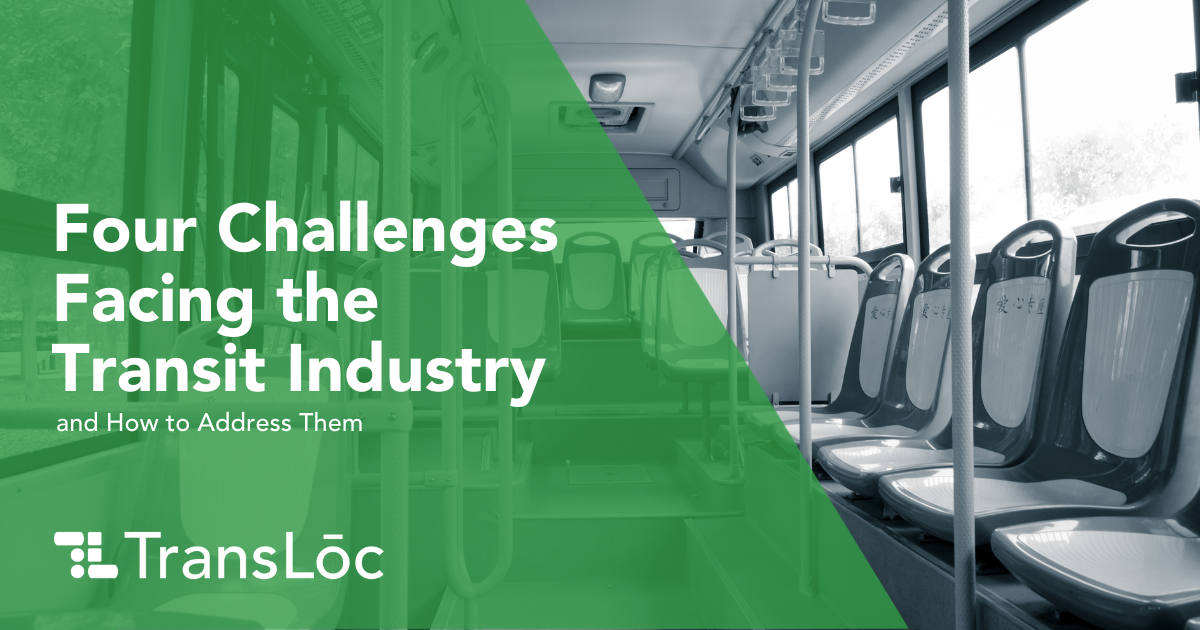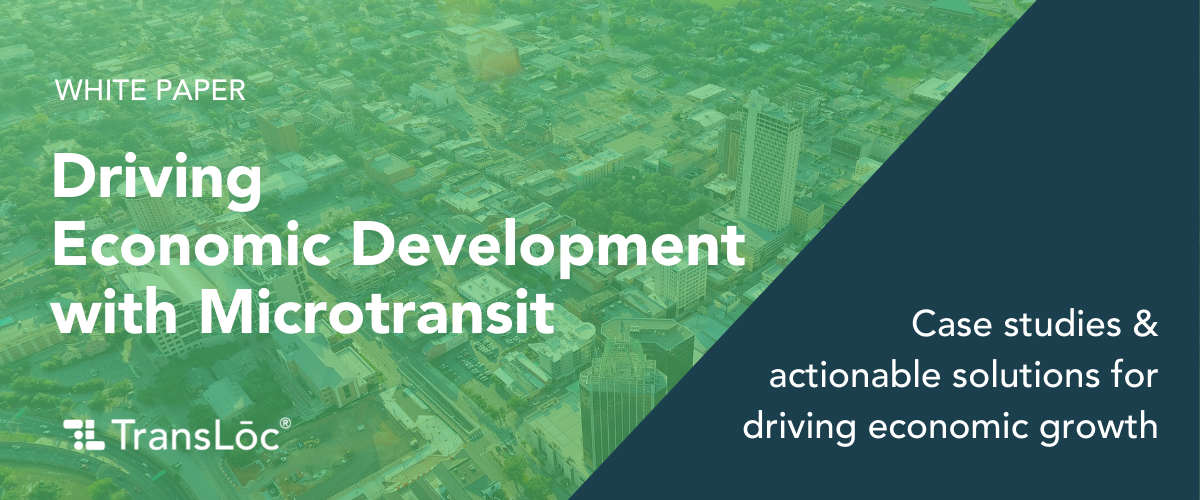
Public transportation is an essential part of the economic and social development within communities.
The complexity of offering safe and efficient public transportation means that transit agencies are constantly trying to hit the bullseye on multiple moving targets. The global COVID-19 pandemic has accelerated declining ridership and funding reduction. Recovery is on the horizon, and ridership numbers have stabilized, but numerous economic and public health challenges remain that transit agencies are trying to remedy. Flexible transit options are becoming the expectation for many riders due to the proliferation of transportation network companies.
Let’s dive into these challenges and explore avenues to solve them:
Maintaining Services with Limited Funding
Transit agencies often face shortfalls in their operating budgets, resulting in creative and strategic solutions to keep operational expenses low. Even long before COVID-19, transit agencies have often been asked to do more with less. The balancing act of maintaining a healthy revenue stream and growing rider loyalty is delicate. Tying cost data to operational and ridership data helps determine the cost of adjusting services. With analyzed data in hand, transit agencies can now optimize for cost efficiency by focusing on areas where there is a high cost per mobility of impact. If boardings per hour are low, agencies can brainstorm new ways to provide mobility in those areas instead of paying for empty buses.
Delivering an Exceptional Rider Experience
Transit agencies know that reducing ride times and wait times, developing a reputation of reliability, and offering a safe service are critical for both the rider experience and enticing new riders to use the system.
People are starting to return to work and their pre-COVID-19 daily patterns of life, which means former riders are ready to ride again—even though they may have some concerns. Transit agencies are focused on delivering a transit experience that is safe, convenient, and efficient. Here are a couple tips to help you keep up with, and surpass, rider expectations:
- Assess real-time data on rider wait times, overall ride times, and headways across all routes. This will allow you to quickly identify potential pain points for your riders, and areas of improvement for your service.
- Analyze cancellation rates. Canceled services offer valuable insight for demand-response systems, as cancellations create significant inefficiencies in the system that negatively impact the experience of other riders. As you dive into cancellation data (we recommend breaking it down into data sets such as time of day, location, and cancellation reason), you’ll be better equipped to develop marketing and education interventions to address them.
Building an Equitable Public Transportation Service Model
The tandem of fixed-route and on-demand services working together can provide equitable mobility to underserved populations in a powerful and efficient way. Blending operational and transit data sets with demographic and equity data sets enables transit agencies to pinpoint where there are disparities in service and how those disparities can be addressed. Demographic, socioeconomic, and residential data such as ethnicity, household income, level of education, historically red-lined neighborhoods, and employment status are all important considerations to build a more equitable service model that keeps communities moving and sparks economic development.
Meeting Mobility Accessibility Standards
Mobility is at its best when anyone can use it, no matter their abilities. To achieve this optimal level of mobility, rider-facing apps need to be AA 2.0 compliant to ensure anyone with visual impairment is able to utilize the app as it is meant to be used.
Going beyond the app, it is important to marry the tech with an operator that utilizes wheelchair accessible vehicles. Operators must be trained on how to assist those with mobile impairments to enter and exit the vehicle. Furthermore, accessibility is not just a measure of ensured ADA capabilities, but must also consider equity. That is where planning and design of mobility solutions is incredibly important. It is during this stage that urban planners and data scientists design mobility solutions in a manner that ensures that minority populations or persons of low-income have the same opportunity to utilize mobility services in a manner that connects them to opportunities within their community.
The solutions of yesteryear no longer apply. No matter the size or resources available, transit agencies are looking for innovative ways to address the challenges presented in their communities.
At TransLoc, we recognize that despite the commonalities, each transit agency can solve this puzzle with their own unique approach. Our certified transportation planners at Planning & Design Services possess the knowledge and experience to effectively collaborate with your agency as you work towards solving these immense challenges. Using your community knowledge, data, and objectives, our Planning & Design Services will help you uncover innovative solutions that address budget constraints, rider experience, accessibility, and equity. Talk to one of our transit experts today to learn how we can partner with you!
